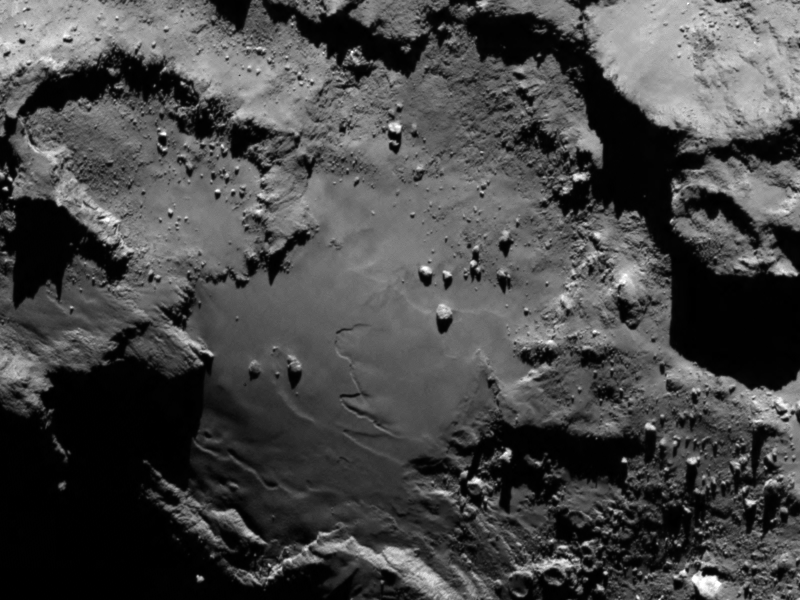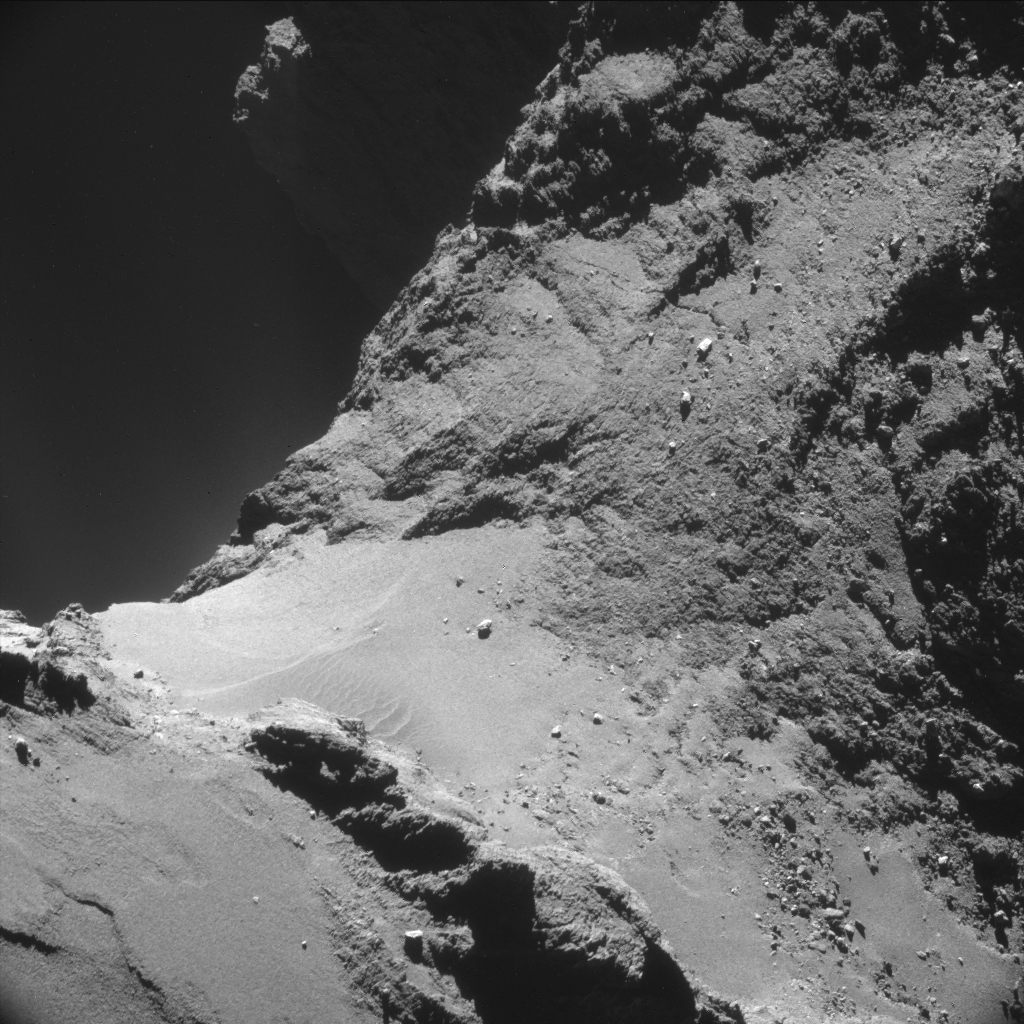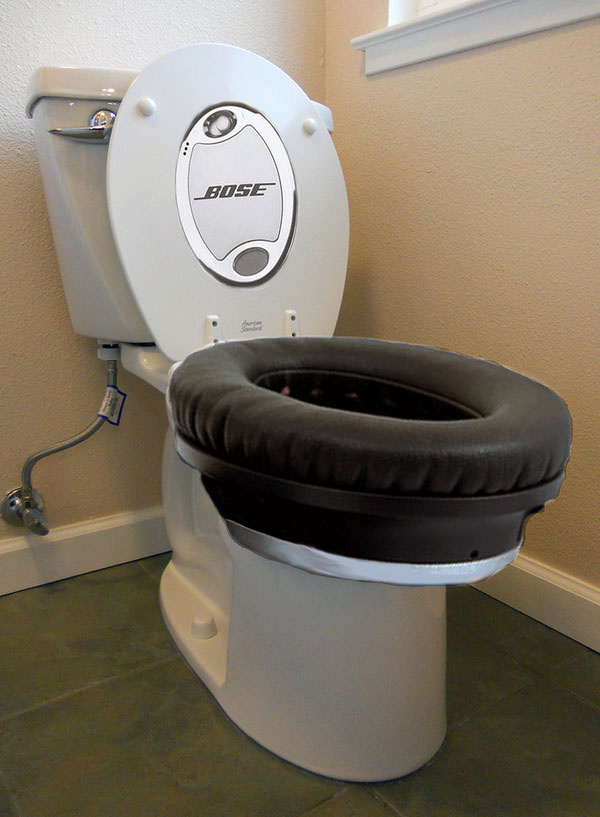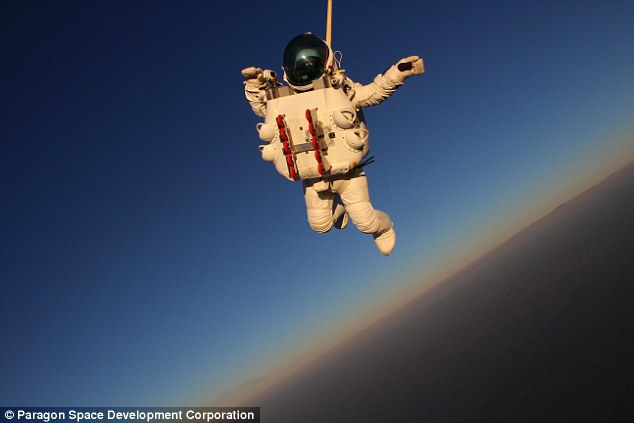-
SCAM WARNING! See how this scam works in Classifieds.
You are using an out of date browser. It may not display this or other websites correctly.
You should upgrade or use an alternative browser.
You should upgrade or use an alternative browser.
Science and Souls (for geeks and spiritual explorers)
- Thread starter Bob Loblaw
- Start date
Vicki
Herbal Alchemist
The interesting this is I believe you will get to see it at sunset.
That would be cool!
grokit
well-worn member

Ray Troll's "Cruisin' the Fossil Freeway", part of the "Prehistoric Alaska" exhibition
http://www.adn.com/article/20100227...-panoramas-share-center-stage-seattle-exhibit
t-dub
Vapor Sloth
Stunning close up detail focusing on a smooth region on the ‘base’ of the ‘body’ section of comet 67P/Churyumov-Gerasimenko. The image was taken by Rosetta’s OSIRIS narrow-angle camera and downloaded 6 August. The image clearly shows a range of features, including boulders, craters and steep cliffs.
The image was taken from a distance of 130 km and the image resolution is 2.4 metres per pixel.

The image was taken from a distance of 130 km and the image resolution is 2.4 metres per pixel.

grokit
well-worn member
Today 9:49 am
Some Fear Ebola Outbreak Could Make Nation Turn to Science
By Andy Borowitz

The Borowitz Report
There is a deep-seated fear among some Americans that an Ebola outbreak could make the country turn to science.
In interviews conducted across the nation, leading anti-science activists expressed their concern that the American people, wracked with anxiety over the possible spread of the virus, might desperately look to science to save the day.
“It’s a very human reaction,” said Harland Dorrinson, a prominent anti-science activist from Springfield, Missouri. “If you put them under enough stress, perfectly rational people will panic and start believing in science.”
Additionally, he worries about a “slippery slope” situation, “in which a belief in science leads to a belief in math, which in turn fosters a dangerous dependence on facts.”
At the end of the day, though, Dorrinson hopes that such a doomsday scenario will not come to pass. “Time and time again through history, Americans have been exposed to science and refused to accept it,” he said. “I pray that this time will be no different.”
Some Fear Ebola Outbreak Could Make Nation Turn to Science
By Andy Borowitz

The Borowitz Report
There is a deep-seated fear among some Americans that an Ebola outbreak could make the country turn to science.
In interviews conducted across the nation, leading anti-science activists expressed their concern that the American people, wracked with anxiety over the possible spread of the virus, might desperately look to science to save the day.
“It’s a very human reaction,” said Harland Dorrinson, a prominent anti-science activist from Springfield, Missouri. “If you put them under enough stress, perfectly rational people will panic and start believing in science.”
Additionally, he worries about a “slippery slope” situation, “in which a belief in science leads to a belief in math, which in turn fosters a dangerous dependence on facts.”
At the end of the day, though, Dorrinson hopes that such a doomsday scenario will not come to pass. “Time and time again through history, Americans have been exposed to science and refused to accept it,” he said. “I pray that this time will be no different.”
RUDE BOY
Space is the Place
Additionally, he worries about a “slippery slope” situation, “in which a belief in science leads to a belief in math, which in turn fosters a dangerous dependence on facts.”
OMG and once they believe in this here mythical magical Math stuff it's gotta be the beginning of the end for Humankind, I mean really we common men don't yet know or understand just how dangerous this new fangled idea of math may prove to be since it's all so recent a discovery.
And Fuck it's a gateway to dependence on Facts and we can't afford to go down that road.
Math Prohibition seems in order here.
Radio
stay true to yourselves
Today 9:49 am
Some Fear Ebola Outbreak Could Make Nation Turn to Science
By Andy Borowitz

The Borowitz Report
There is a deep-seated fear among some Americans that an Ebola outbreak could make the country turn to science.
In interviews conducted across the nation, leading anti-science activists expressed their concern that the American people, wracked with anxiety over the possible spread of the virus, might desperately look to science to save the day.
“It’s a very human reaction,” said Harland Dorrinson, a prominent anti-science activist from Springfield, Missouri. “If you put them under enough stress, perfectly rational people will panic and start believing in science.”
Additionally, he worries about a “slippery slope” situation, “in which a belief in science leads to a belief in math, which in turn fosters a dangerous dependence on facts.”
At the end of the day, though, Dorrinson hopes that such a doomsday scenario will not come to pass. “Time and time again through history, Americans have been exposed to science and refused to accept it,” he said. “I pray that this time will be no different.”

Seren
Away with the fairies
Last edited:
t-dub
Vapor Sloth
Taken at less than five miles from from the surface, Rosetta’s newest images of Comet 67P/C-G are close enough to resolve objects as small as two feet across.
The image is of the comet’s narrow neck, and shows two very interesting features.
First the dunes. In the sandy smooth area you can see dune-like ripples, almost as if a wind had been blowing across the sand. Though the comet has no permanent planetary atmosphere (it is too small), it does have a temporary atmosphere produced as material vents away when the comet approaches the Sun and heats up. This temporary atmosphere apparently can blow across the sand and create dunes.
Next is the fracture-like features in the darker material to the top of the image. The biggest fracture line appears to be a meandering line that is traveling from the image’s top center to its mid-right. There also appear to be parallel lines below it. As we are looking at the nucleus’s neck, these lines suggest that the connection between the two large lobes is somewhat strained, and that it is not unlikely that these two sections will break apart at some time in the future. Though there is no way to predict at this time when that will happen, it will be truly exciting if it happens when Rosetta is in the neighborhood.
http://behindtheblack.com/behind-th...e-at-less-than-1-meter-resolution/#more-31361

The image is of the comet’s narrow neck, and shows two very interesting features.
First the dunes. In the sandy smooth area you can see dune-like ripples, almost as if a wind had been blowing across the sand. Though the comet has no permanent planetary atmosphere (it is too small), it does have a temporary atmosphere produced as material vents away when the comet approaches the Sun and heats up. This temporary atmosphere apparently can blow across the sand and create dunes.
Next is the fracture-like features in the darker material to the top of the image. The biggest fracture line appears to be a meandering line that is traveling from the image’s top center to its mid-right. There also appear to be parallel lines below it. As we are looking at the nucleus’s neck, these lines suggest that the connection between the two large lobes is somewhat strained, and that it is not unlikely that these two sections will break apart at some time in the future. Though there is no way to predict at this time when that will happen, it will be truly exciting if it happens when Rosetta is in the neighborhood.
http://behindtheblack.com/behind-th...e-at-less-than-1-meter-resolution/#more-31361

Seren
Away with the fairies
EveryDayAmnesiac
Well-Known Member
Interesting that the depressed guy seems so "blue."
Kinda reminds me of THIS guy:

Kinda reminds me of THIS guy:

Dawntreader
Kayakist
This is my kind of thread! I will be watching it 

Dawntreader
Kayakist
Fucking Fantastic!!!!!!!!!!
t-dub
Vapor Sloth
As it soared past Saturn's large moon Titan recently, NASA's Cassini spacecraft caught a glimpse of bright sunlight reflecting off hydrocarbon seas.
Also in the image:
-- An arrow-shaped complex of bright methane clouds hovers near Titan's north pole. The clouds could be actively refilling the lakes with rainfall.
-- A "bathtub ring," or bright margin, around Kraken Mare -- the sea containing the reflected sunglint -- indicates that the sea was larger at some point, but evaporation has decreased its size.
Titan's seas are mostly liquid methane and ethane. Before Cassini's arrival at Saturn, scientists suspected that Titan might have bodies of open liquid on its surface. Cassini found only great fields of sand dunes near the equator and lower latitudes, but located lakes and seas near the poles, particularly in the north.
http://www.jpl.nasa.gov/spaceimages/details.php?id=pia18432

Also in the image:
-- An arrow-shaped complex of bright methane clouds hovers near Titan's north pole. The clouds could be actively refilling the lakes with rainfall.
-- A "bathtub ring," or bright margin, around Kraken Mare -- the sea containing the reflected sunglint -- indicates that the sea was larger at some point, but evaporation has decreased its size.
Titan's seas are mostly liquid methane and ethane. Before Cassini's arrival at Saturn, scientists suspected that Titan might have bodies of open liquid on its surface. Cassini found only great fields of sand dunes near the equator and lower latitudes, but located lakes and seas near the poles, particularly in the north.
http://www.jpl.nasa.gov/spaceimages/details.php?id=pia18432













